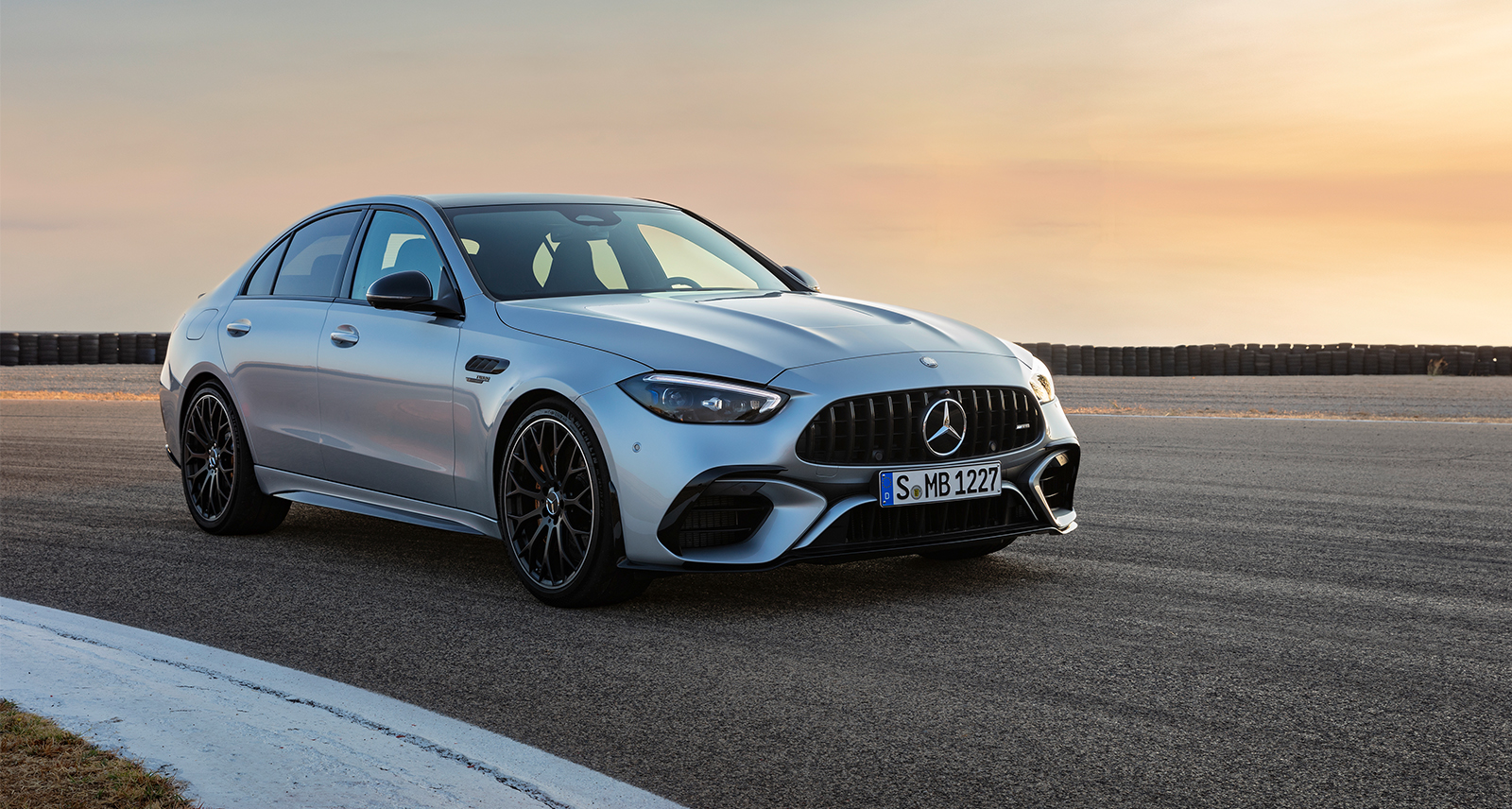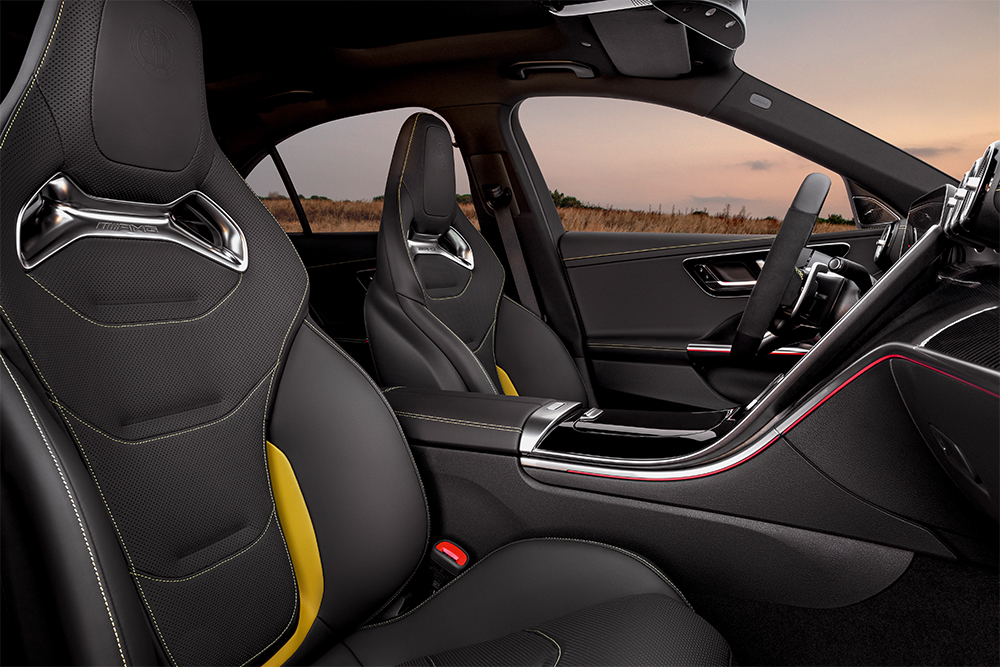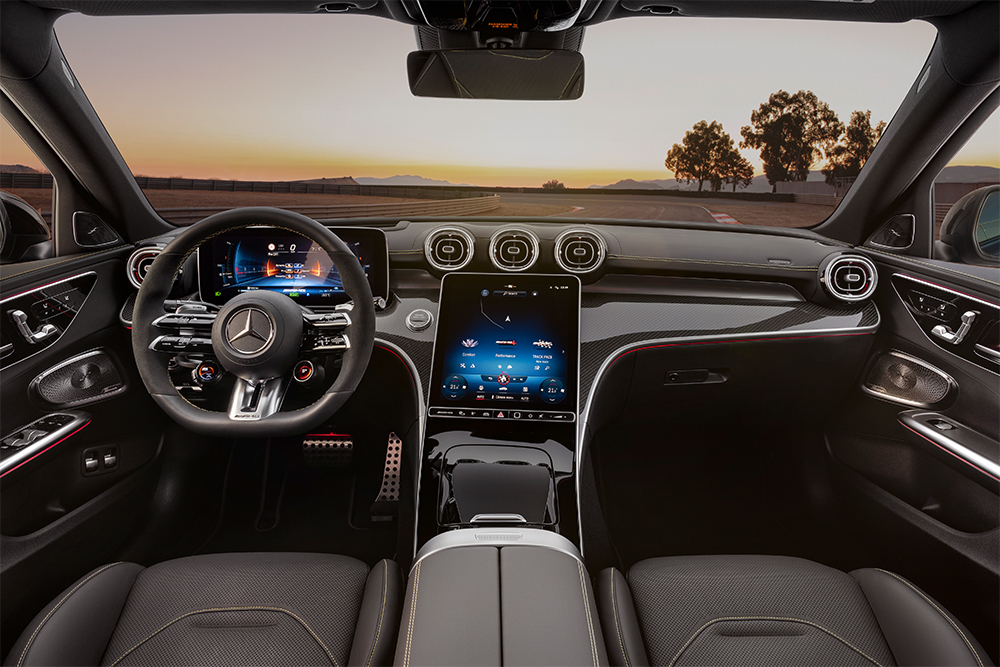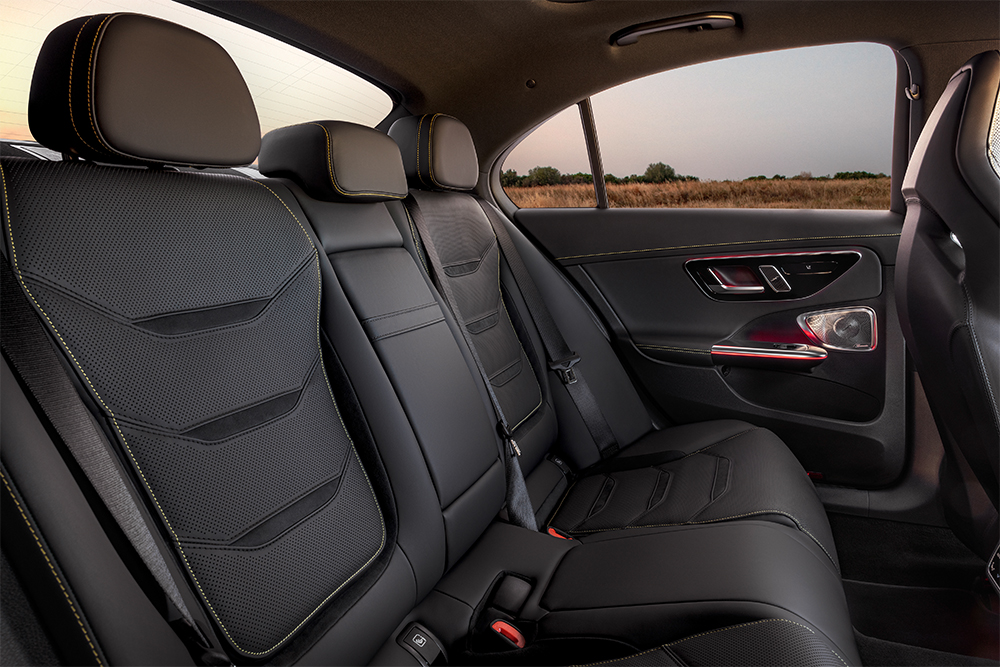The New 2024 AMG C 63 S E Performance Takes Notes From Its Big GT Brother
In days gone by, the rules were simple: There was no replacement for displacement. Real performance meant a V8, or even better, a V12. And then electrification came back to vehicles after it had been absent for so long, and automakers now have a whole new palette for driveline design incorporating it. Mercedes-Benz’s Aufrecht-Melcher-Großaspach performance division – which you likely know better as AMG – is already familiar with it. It recently unveiled the Mercedes-AMG GT 63 S E Performance, mating a twin-turbo V8 with an electric motor for the rear wheels for a combined 1,032 lb-ft of torque.
But if you don’t need quite that much raw power, the division has now taken the wraps off the new 2024 Mercedes-AMG C S E Performance. It also has a gasoline engine up front and an electric motor behind, but it wrangles a gas-electric-combined 671 horsepower and 752 lb-ft of torque out of just a turbocharged 2.0-litre four-cylinder. And given that the conventional AMG-enhanced C-Class has always been a shining star for its brilliant balance in a compact footprint, we’re expecting great things when we finally get behind the wheel closer to its on-sale date in early 2023. Only a sedan will be available over here, while global markets will also get a four-door wagon.
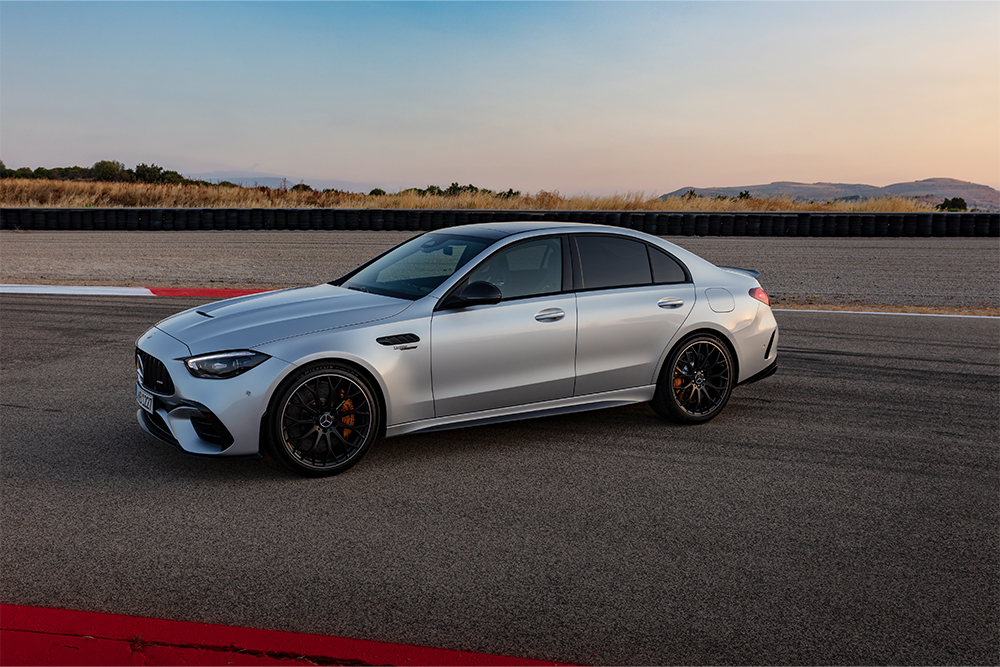
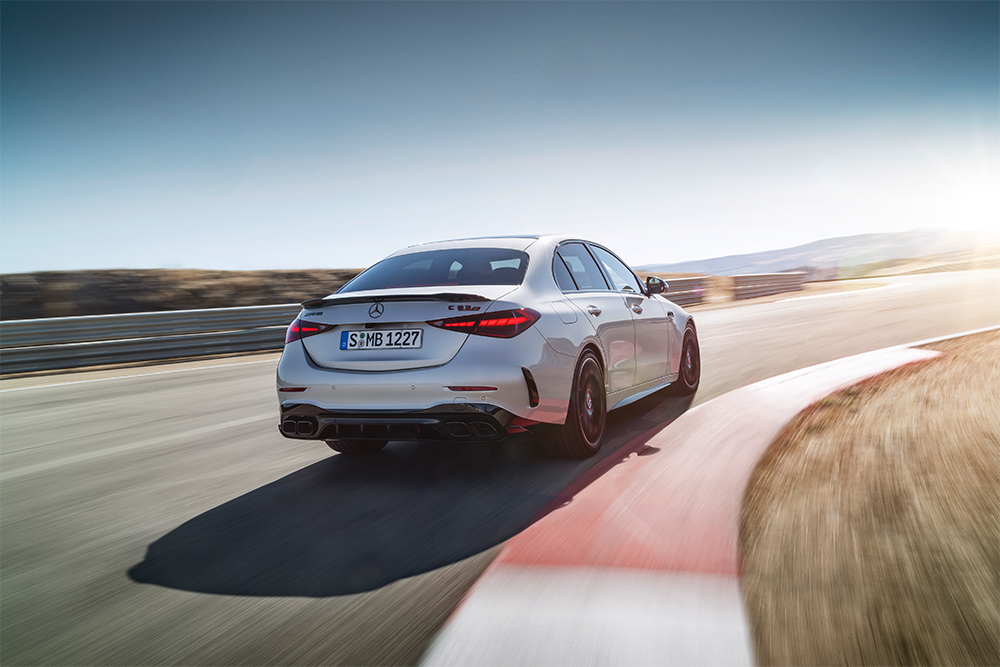
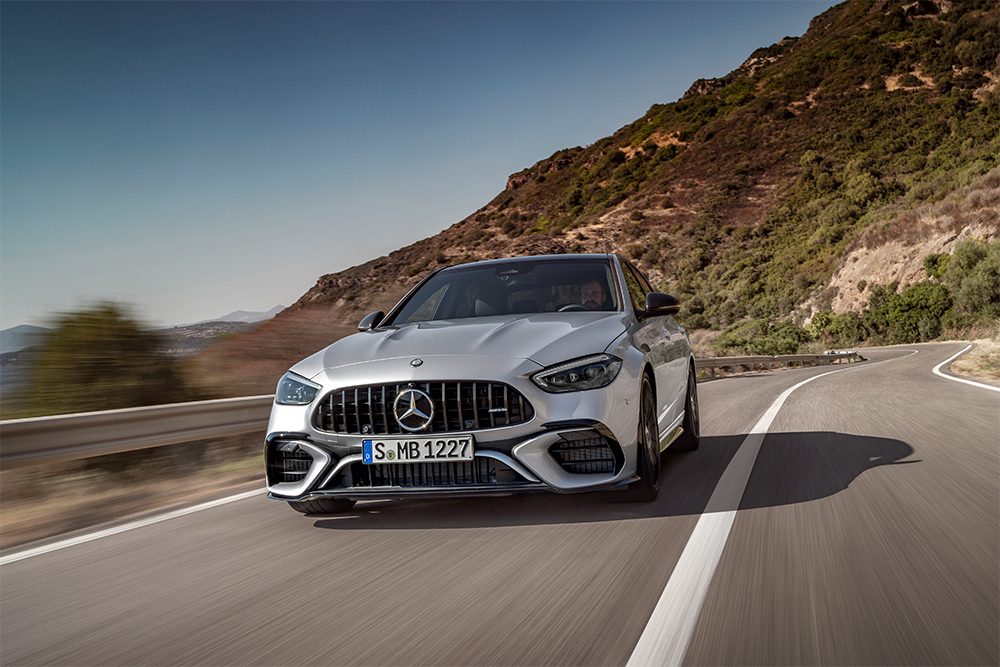
“There are younger customers coming in, and they have an appreciation for electrification,” said Philipp Schiemer, chairman of Mercedes-AMG GmbH. “Most are not replacing a V8.” When deciding what’s going under the hood, the automaker looks at the vehicle and at its market. With the 2.0-litre, the C-Class “is the right vehicle to put it in,” he said.
As with the GT 63 S E Performance, the new C S E Performance borrows some of its technology from Formula 1. The engine on its own churns out 469 horsepower and 402 lb-ft of torque, using an electric exhaust-gas turbocharger that eliminates lag and improves airflow. Mercedes boasts that it’s the most powerful series-production four-banger in the world.
An electric motor is at the rear axle, rated at 150 kW (201 horsepower) and 236 lb-ft of torque, and integrated into a drive unit that also contains an electrically-shifted two-speed gearbox and electronically-controlled limited-slip differential. It’s fed by a 6.1-kWh battery that’s also over the rear axle. Designed in-house by AMG, the battery’s small but mighty, weighing just 89 kilograms and meant for emphasizing power, rather than EV driving range. The C S E Performance is a plug-in hybrid (PHEV) and when it’s fully charged will provide about 13 kilometres of driving on electric-only. The battery also grabs energy from regenerative braking, but won’t fully deplete and then await recharging as with a conventional PHEV. “If you don’t charge it, it will still drive, but the EV-only range is reduced,” Schiemer said. That’s so there is always sufficient charge in the battery to power the rear wheels as needed.
The car is all-wheel drive, with the gasoline engine driving the front wheels, and the electric motor powering the rear ones. Since an electric motor makes its peak torque as soon as it starts up, the car is already on its way while the gas engine is still taking its split second to rev up to full power. Zero to 100 km/h happens in 3.4 seconds. The limited-slip differential provides variable all-wheel drive for sharp cornering and handling, along with rear-wheel steering, but the system also has a trick up its sleeve. There’s a mechanical connection between the axles, and if the rear wheels slip, electric torque transfers to the front wheels to improve their traction.
There are eight selectable drive modes, all of which adjust the steering, suspension damping, transmission and sound, as well as the electric motor’s boost. That fuel-free torque is minimized in comfort or slippery-conditions mode, although you can still get peak power in any program with a hard boot to the throttle. The electric-drive mode is limited to the 13-or-so kilometres of battery-only, but can run on electricity up to 125 km/h. The sport, sport-plus and race modes provide increasing amounts of electric boost.
Regenerative braking is also selectable, from a Level 0 with least resistance, up to Level 3 that’s strong enough to allow for one-pedal driving. As for how this car will sound, it includes the mandatory pedestrian alert through exterior speakers when running on electric-only; but at higher speeds, the combustion engine’s exhaust note is amplified through both the interior stereo speakers and the exterior units, one at the front and two at the back, so bystanders know this is not your ordinary C-Class.
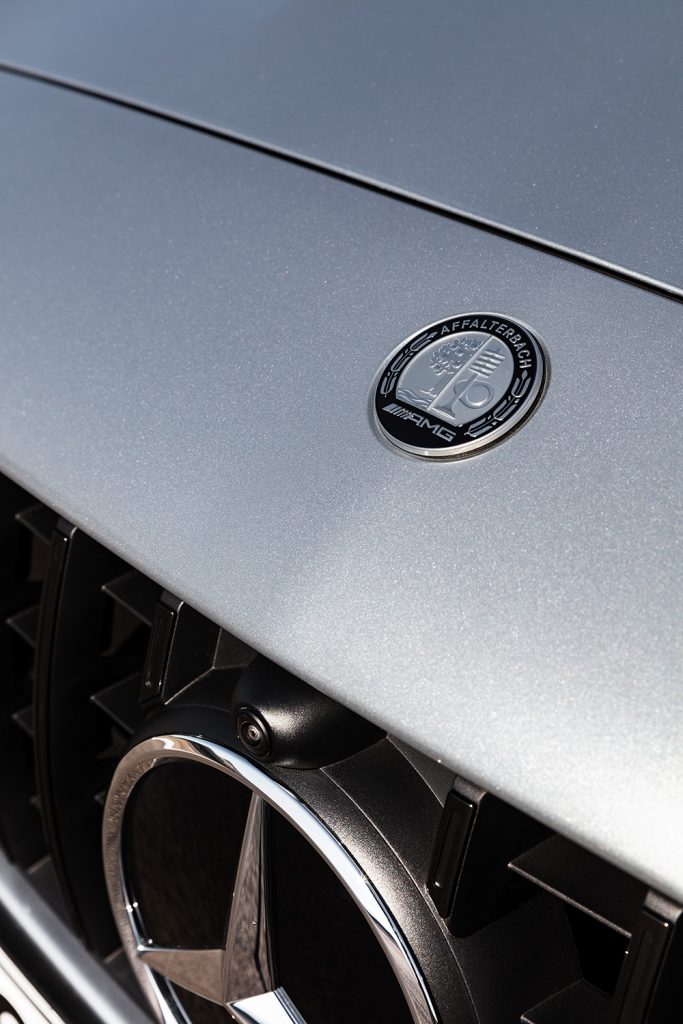
Compared to its gasoline-only C-Class sibling, the C 63 S E Performance sedan is longer and wider, with a wider front track, a hood air outlet, vertical grille struts, and “jet wing” design on the front fascia. For the first time on any Mercedes-AMG production car, the small round badge on the hood has an AMG emblem, rather than the Mercedes-Benz star.
While four cylinders provide the propulsion for this tech-heavy compact sedan, those who aren’t that impressed with displacement replacement will still have options. “We will offer an internal combustion engine for as long as it’s allowed by regulations and customer demand, and a V8 will still be available,” Schiemer said. “Customers want the sound and the emotion of a V8. We want to define performance in this new EV market, but we will sell V8s for as long as there is demand.”
